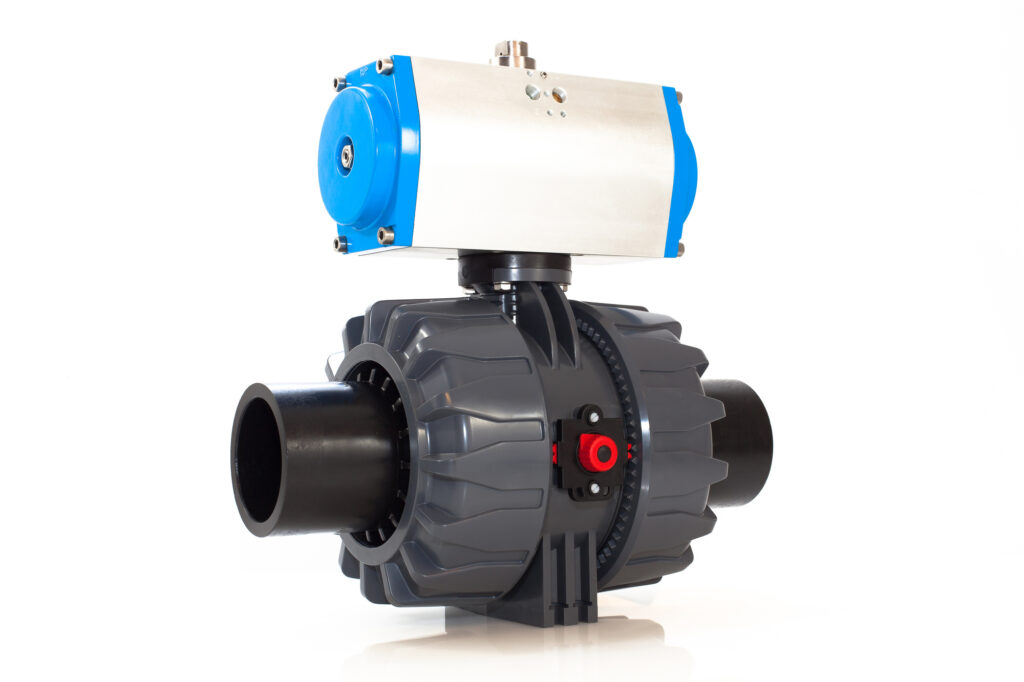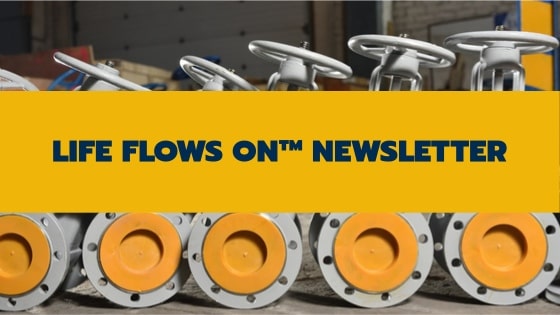Thermoplastic Valves for Acid Applications

The cost of corrosion in the US is equivalent to 2.7% of the total GDP. That’s over $600 billion! Industries like oil and gas, chemical, and water treatment face significant challenges in fighting corrosion damage to equipment and facilities.
Corrosion is just one of the problems that thermoplastic valves can solve for your acid applications. Find out more about these versatile and robust flow control solutions. A thermoplastic valve may be just what you’re looking for.
What Is a Thermoplastic?
A thermoplastic is a type of plastic made from polymer resins. It becomes soft when you heat it and hard when it cools. Manufacturers can mold a thermoplastic into a wide variety of shapes, resoften it, and mold it again.
You can heat and cool thermoplastics multiple times, so they’re highly recyclable.
Benefits of Thermoplastic Valves for Acid Applications
The main challenge with acid applications is corrosion. For example, hydrochloric acid will corrode most metal materials, including stainless steel. Each threaded component or seal in the system is a potential weak point that increases the chance of a leak.
Thermoplastic valves give you many advantages for acid applications. One of the most important benefits is excellent corrosion resistance. Thermoplastics also have a high flow coefficient, low thermal conductivity, and lighter weight than other materials.
Corrosion Resistance
Thermoplastic valves are dielectric. They don’t support an electrical charge. This means they don’t suffer from the electro-chemical corrosion that metal valves get.
The microbiological-influenced corrosion that causes rust and pitting in metal valves doesn’t affect thermoplastic valves. Thermoplastic materials are resistant to many acids, including hydrochloric acid.
High Flow Coefficient
The interior walls of thermoplastic valves have a smooth finish. This enables a consistently high flow coefficient over the life of the valve.
Low Thermal Conductivity
Thermoplastic valves have a lower thermal conductivity than metal valves. This minimizes any heat loss or gain. You maintain more uniform temperatures.
Lighter Weight
A thermoplastic valve is significantly lighter than a metal valve. You have lower shipping and handling costs. The installation is easier.
Thermoplastic Valve Materials
Many types of thermoplastic are available. Some of the most common thermoplastics for valve manufacturing are PVC, CPVC, PP, GFPP, and PVDF.
Each material will perform differently in different operating conditions. ASTM standards define the inherent properties of each type of thermoplastic. The standards outline characteristics including:
- Impact resistance
- Tensile strength
- Elasticity
- Heat deflection temperature
Thermoplastic valve assemblies have smaller components made from different materials. These components interact with the service media. Checking the chemical compatibility of all valve materials before selecting one helps avoid problems like premature valve failure.
Polyvinyl Chloride (PVC)
PVC is one of the most common valve body materials. It has a decades-long successful track record in acid applications. PVC provides excellent chemical resistance to a wide variety of acids as well as alkalis, salt solutions, and many other chemicals.
PVC isn’t suitable for most solvents, aromatics, or some chlorinated hydrocarbons.
The maximum working pressure of PVC is 150 lbs psi. The maximum service temperature is 140ºF.
Chlorinated Polyvinyl Chloride (CPVC)
CPVC has physical properties very similar to PVC. However, the chlorination reaction that CPVC undergoes when it’s produced gives it a higher temperature tolerance and better corrosion resistance than PVC. The maximum service temperature is 200ºF.
CPVC isn’t pH limited. It can accommodate wide pH swings in the fluid. It’s also resistant to bacteria.
Polypropylene (PP) and Glass-Filled Polypropylene (GFPP)
PP has excellent chemical resistance to a wide range of acids as well as alkalis and organic solvents. However, it’s not suitable for strong oxidizing acids, chlorinated hydrocarbons, or aromatics. PP is only half as strong as PVC or CPVC, but it has the most versatile chemical resistance of any thermoplastic.
The maximum service temperature of PP is 180ºF.
GFPP has glass fibers added to the polypropylene. The glass fibers give it higher pressure and temperature thresholds. The maximum service temperature of GFPP is 250ºF.
Polyvinylidene Fluoride (PVDF)
PVDF is a fluorinated polymer. The high fluorine content gives PVDF more temperature resistance. The maximum service temperature is 300ºF.
PVDF has excellent corrosion, chemical, and abrasion resistance. It has better strength and wear resistance than other fluoroplastics like PTFE and PFA. PVDF has high impact resistance, and it resists UV rays.
Sealing Materials
The most common sealing elastomers are ethylene propylene diene monomer (EPDM) and fluorocarbon (FPM/FKM). Some valves may have elastomers that are polytetrafluoroethylene (PTFE)-lined or encapsulated.
EPDM is suitable for dilute acids. FPM/FKM and PTFE are resistant to a wide range of acids.
Types of Thermoplastic Valves
Several types of thermoplastic valves are available. The service and application will determine which type of valve will work best.
You’ll need to consider the intended function of the valve as well as temperature and pressure requirements. You should also look at any maintenance or repair issues that may come up due to the application. Some valves, like check valves, have other requirements to consider like whether the valve will have vertical or horizontal mounting.
Ball Valves
Ball valves are designed for on/off service. The fluid velocity changes significantly as the valve moves from open to closed. The high velocity can damage the trim on the ball and the seat.
A profiled ball or characterized port ball valve is available for throttling applications. However, the level of control is less precise than with a diaphragm or globe valve.
Butterfly Valves
Thermoplastic butterfly valves work well for on/off service or throttling. The valve’s design allows for operation through the whole 90-degree travel range.
Choosing a butterfly valve with a non-wetted shaft means you won’t need to consider additional compatibility or corrosion issues.
Diaphragm Valves
Diaphragm valves work well for throttling. The open-to-close cycle is more than 90º, so the throttling is more precise than with a ball or butterfly valve.
Check Valves
Thermoplastic check valves have different possible configurations. The most common are ball, swing, and piston check valves.
Ball check valves are best for vertical service, but you can use them horizontally as well. Swing check valves are ideal for horizontal applications. Piston check valves are well-suited for vertical or horizontal applications.
Finding the Right Thermoplastic Valves
You have many reasons for choosing thermoplastic valves for your acid applications. You also have many choices when it comes to finding the right thermoplastic valve.
Anything Flows has the thermoplastic valves you need. We have an extensive inventory of quality products at competitive prices. Contact us today and let’s find the solution for your acid applications.

